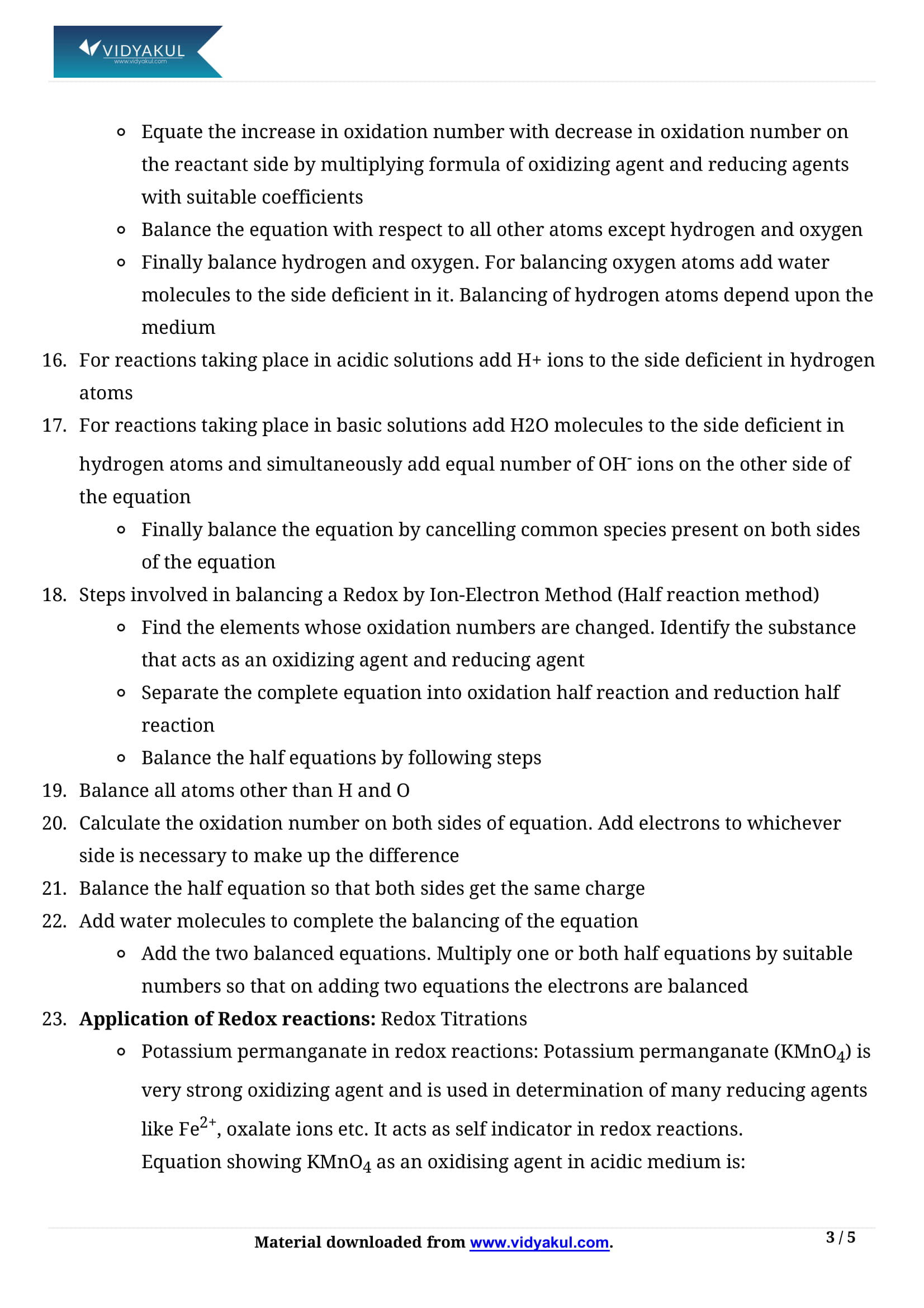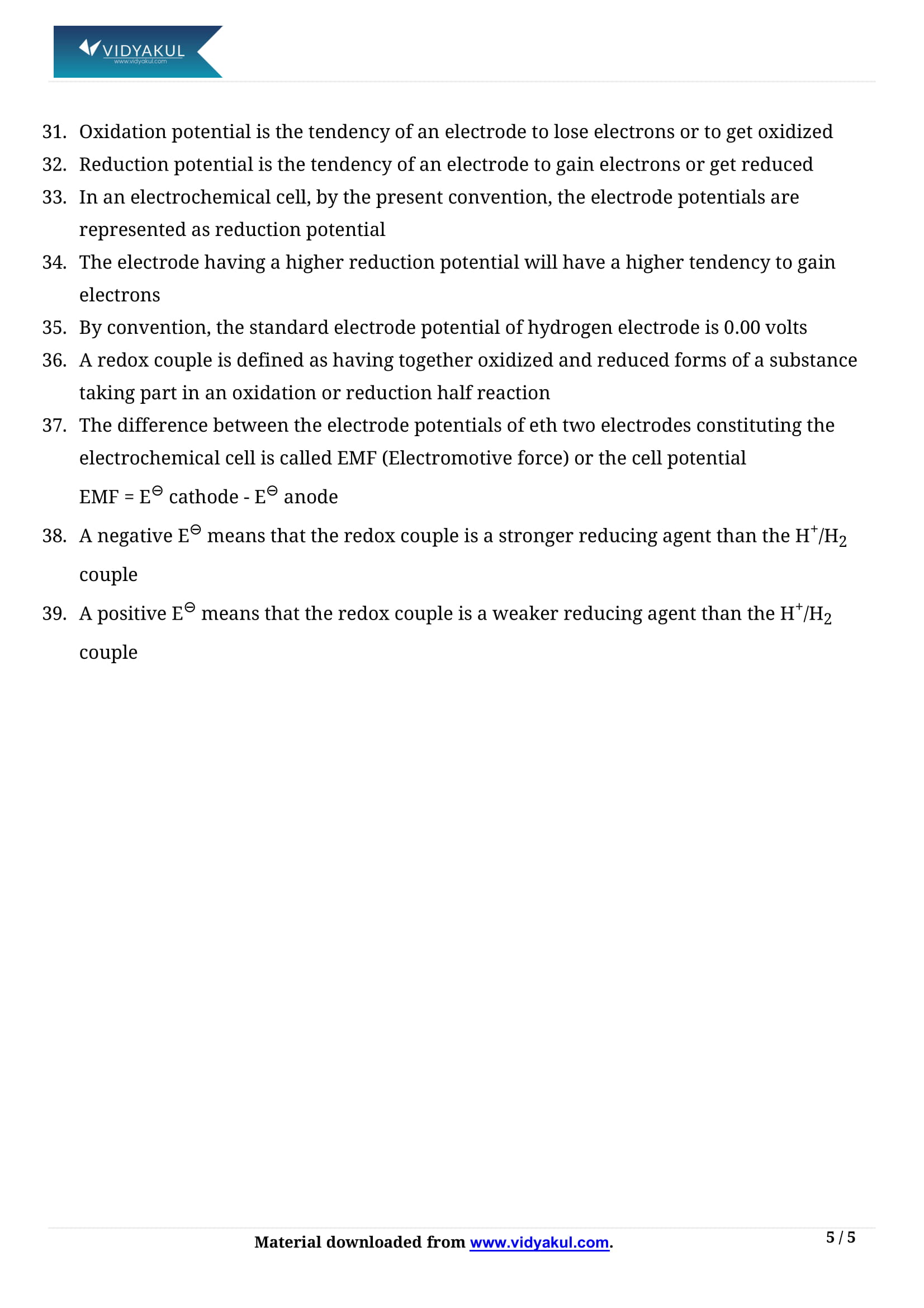Redox Reactions Class 11 Notes

Chapter 8 Redox Reactions
Topics discuss kinetic issues related to redox reactions. NCERT books are organized in such a way that each chapter is followed by an exercise problem for students to solve. Students should cover all the important topics in the exercises before attempting them.
This notes details the answers and presents them in a simple way for easy interpretation by students. Students can complete NCERT Class 11 Chemistry Chapter 8 exercises by referring to all study materials provided by Vidyakul. Scroll down to find the direct link for the free PDF download of NCERT Chemistry notes Class 11 Chapter 8 - Redox Reactions.
CBSE 11th CHEMISTRY CH-8
Points to Remember
Redox reactions can be classified into four different categories:
Combination reaction
Decomposition reaction
Displacement reaction
Disproportionation reaction
The role of an oxidizing agent (Oxidant) in a chemical reaction is to gain electrons. They are highly electronegative. Once they gain electrons, these substances are reduced. An oxidant is also known as an electron acceptor. Example nitric acid, and halogen.
Topics and Sub- topics
To help the students prepare well for the exam, Vidyakul offers Class 11 Chemistry Chapter 8 NCERT notes along with a direct link to the PDF download for free. These notes sets are prepared by a team of experts from Vidyakul who understand the marking scheme and exam pattern followed by CBSE better.
Before getting into the details of Class 11 Chemistry Chapter 8 NCERT notes, students can go through the topics included in Class 11 Chemistry Chapter 8 to get an idea of the constituent topics of this chapter.
Frequently Asked Questions
What is a ‘Reducing agent’?
A reducing agent typically is in one of its lower possible oxidation states and is known as the electron donor.
What is ‘Combination reaction’?
A combination reaction is a reaction in which two reactants combine to form one product.
What happens in a ‘Displacement reaction’?
When a more reactive element displaces, or pushes out, a less reactive element from a compound that contains the less reactive element. This is the basic principle behind a Displacement reaction.
Practice Questions
Excess of chlorine from drinking water is removed by treating with sulphur dioxide. Write a balanced equation for this redox change.
Why is AgF2 a very strong oxidizing agent? Explain.
Why ozone and nitric acid act only as oxidants? Explain.
Redox reactions can be classified into four different categories:
Combination reaction
Decomposition reaction
Displacement reaction
Disproportionation reaction
The role of an oxidizing agent (Oxidant) in a chemical reaction is to gain electrons. They are highly electronegative. Once they gain electrons, these substances are reduced. An oxidant is also known as an electron acceptor. Example nitric acid, and halogen.
What is a ‘Reducing agent’?
What is ‘Combination reaction’?
What happens in a ‘Displacement reaction’?
Excess of chlorine from drinking water is removed by treating with sulphur dioxide. Write a balanced equation for this redox change.
Why is AgF2 a very strong oxidizing agent? Explain.
Why ozone and nitric acid act only as oxidants? Explain.
Know more about the same in Redox Reactions Class 11 Notes pdf.
Download this solution for FREE Download this PDF








